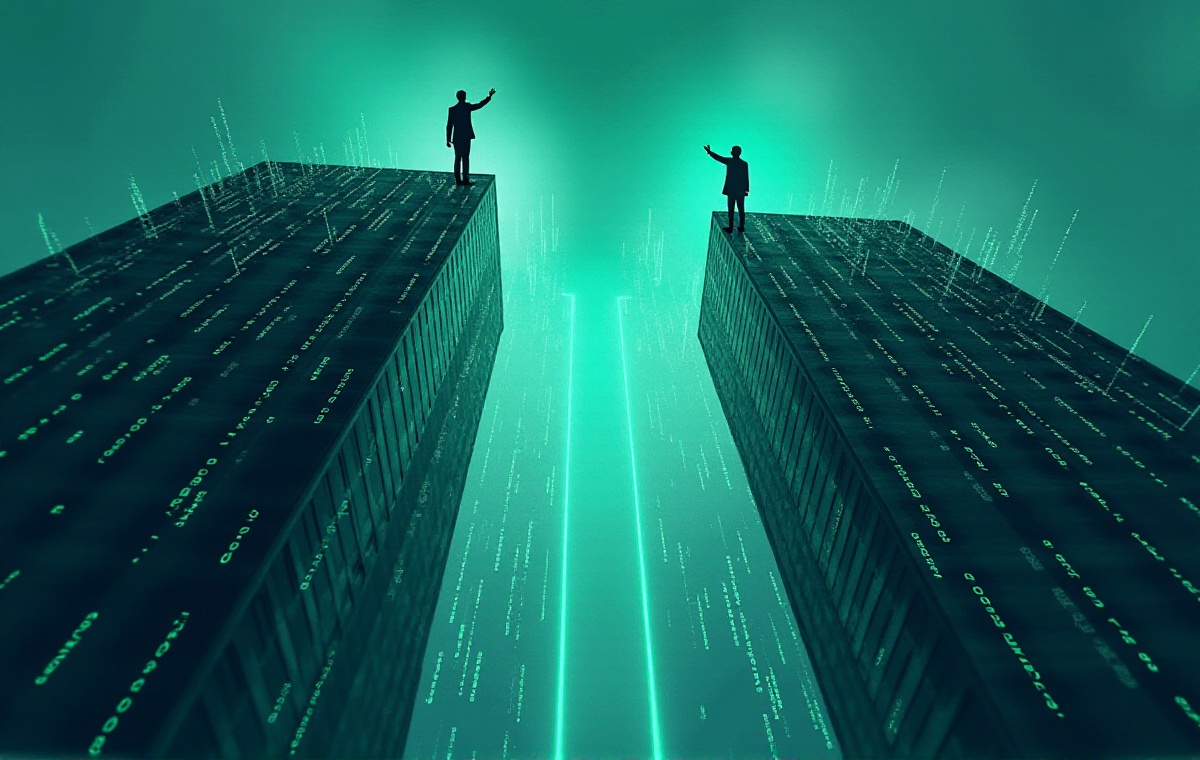First Encounter with the British Museum
After a bumpy ride from Heathrow Airport, I finally got off in central London. The moment I first stepped into the British Museum, I was struck speechless by this magnificent building. Greek-style columns soared into the sky, and the massive glass dome bathed the courtyard in sunlight, making me feel like I was in an enormous temple of art.
This cultural treasury, established in 1753, is like a giant time machine that took me on a journey through human civilization. The collection size of the British Museum is absolutely staggering - over 8 million pieces! To put this in perspective, if you were a super artifact enthusiast viewing 100 items per day, without eating, drinking, or sleeping, it would take nearly 219 years to see everything. That number is insane! And each artifact has its own unique story and profound historical significance.
I remember my first visit to the British Museum, spending half an hour just standing at the entrance. Not because of queues, but because I was deeply captivated by the architectural details at the entrance. The exquisite reliefs, Greek-style columns, and intricate decorations on the portico all tell the history of the building itself. The entire design is full of neoclassical elegance, immersing visitors in an artistic atmosphere before even entering.
Cultural Impact
Walking through the courtyard and strolling in the spacious galleries, the Rosetta Stone gallery left the deepest impression on me. That famous black basalt slab sits quietly there, always surrounded by tourists. This isn't just any ordinary stone - it's the "codebook" that cracked ancient Egyptian hieroglyphics!
Imagine, before the discovery of this stone, people were completely baffled by ancient Egyptian hieroglyphics. Those mysterious symbols painted on pyramid walls and carved on sarcophagi were like an indecipherable heavenly book. Until 1799, when French soldiers discovered this stone in Rosetta during Napoleon's Egyptian expedition. The stone recorded the same content in three scripts: hieroglyphics, Demotic script, and ancient Greek. It was by comparing these three scripts, especially the known ancient Greek, that archaeologist Champollion finally cracked the mystery of hieroglyphics in 1822.
Every time I stand before the Rosetta Stone, I imagine Champollion's excitement when he decoded the script. Those texts that had been silent for thousands of years finally spoke again! Through this stone, we can not only read ancient Egyptian history but more importantly understand the thinking and lifestyle of an ancient civilization.
Besides the Rosetta Stone, the Parthenon sculptures also left a deep impression on me. These precious artifacts from ancient Greece, though controversial, allow us to closely experience the essence of ancient Greek art. Those lifelike human sculptures, the folds of clothing, the muscle lines - every detail is perfect and awe-inspiring.
Visitor's Guide
As a blogger who frequently leads tours, I've developed a "British Museum Quick Guide." Honestly, many people ask me: "How can I see all the highlights of the British Museum in one day?" This question always makes me laugh because the answer is simple: it's impossible. However, we can plan a reasonable route to spend limited time on the most worthwhile exhibits.
I suggest focusing on three areas: the Egyptian Gallery, the Greek Gallery, and the Asian Gallery. The Egyptian Gallery, besides the Rosetta Stone, has numerous mummies and burial goods. These artifacts show us ancient Egyptians' unique understanding of the afterlife. They believed death was just the beginning of another journey, so they carefully prepared various burial items. Those exquisite gold and jade items, along with well-preserved mummies, all tell the story of this mysterious civilization.
The Greek Gallery's main attraction is naturally the Parthenon sculptures, but don't forget to look at other exhibits. The patterns painted on ancient Greek pottery often record mythological stories or daily life scenes, providing important windows into ancient Greek society. Sometimes I'll stand in front of a pottery vessel for a long time just to see every detail depicted on it.
The Asian Gallery collects various artifacts from the Middle East to the Far East, making it an excellent place to understand Asian civilizations. The Buddhist art section is particularly special, clearly showing how Buddhist art evolved through different cultures, from Gandhara style to Central Asian style to East Asian style.
Each gallery needs at least 2 hours, and that's at a very rushed pace. So remember to take breaks - the museum's cafes are good choices. I particularly enjoy sitting in the Great Court cafe, drinking English tea while watching visitors come and go, feeling the vitality of this cultural temple.
However, I must remind everyone that visiting a museum isn't about rushing through. Rather than hastily viewing all galleries, it's better to calm down and carefully appreciate a few artifacts that truly move you. Every artifact has a fascinating story behind it worthy of our contemplation.

Meeting the Shanghai Museum
Flying from London to Shanghai, before even getting over jet lag, I eagerly rushed to the Shanghai Museum. My first impression of this top Chinese museum was: traditional charm combined with modern spirit.
The People's Square building's exterior adopts traditional Chinese multi-eaved hip-and-gable roof design, but the overall shape is concise and modern. Entering the hall, the museum's treasure - the "Da Ke Ding" bronze vessel from the late Shang Dynasty - stands before you. Weighing 201.5 kilograms, its body is covered with exquisite patterns. Every time I see it, I imagine how craftsmen 3000 years ago cast such a magnificent work.
The bronze gallery is arguably one of the most attractive sections in the Shanghai Museum. From Shang-Zhou to Qin-Han dynasties, the evolution of bronze vessels' shapes and patterns clearly shows the development of ancient Chinese arts and crafts. Those exquisite patterns aren't just decorations but carriers of ancient people's cosmic and life views. For example, the common taotie pattern, with its fierce face, hides ancient people's awe of natural forces.
Dual Museum Operation
Shanghai Museum's current dual-museum layout is particularly interesting. The People's Square building mainly displays traditional ancient Chinese art, while the East Building in Pudong focuses on modern and contemporary art and cross-cultural exchange. If the People's Square building is a classic literary masterpiece, then the East Building is its modern annotated version - they complement each other in telling the story of Chinese civilization.
Besides the Da Ke Ding, the People's Square building has many amazing collections. For example, Wu Bin's "Ten Views of Lingbi Rock" from the Ming Dynasty, a long scroll depicting strange rocks from unique perspectives, reflects literati's unique understanding of nature. There's also Giuseppe Castiglione's "One Hundred Horses" from the Qing Dynasty, which combines Chinese and Western painting techniques, showing the characteristics of Qing court art.
The East Building's exhibition design is very modern, making full use of multimedia technology. I particularly like its "Silk Road" section, which vividly presents ancient East-West cultural exchange scenes through modern technology like sound and light. Standing in the exhibition hall, you can almost hear camel bells and see caravans moving across the Gobi Desert.
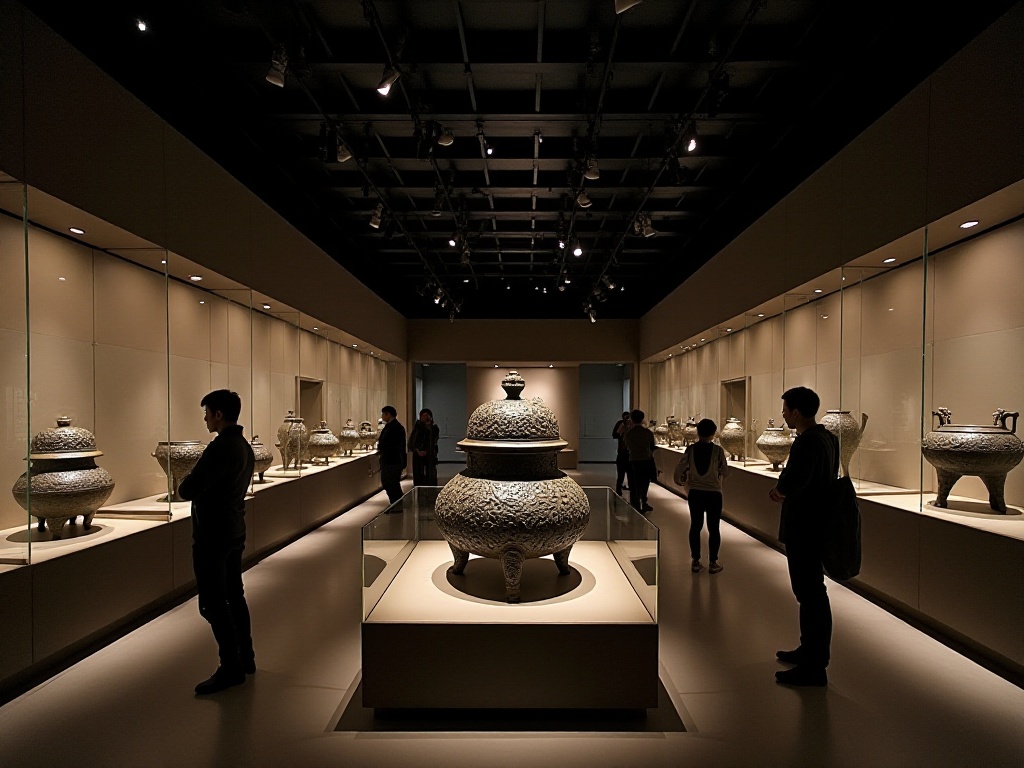
Creative Products Surprise
Speaking of Shanghai Museum's creative products, they're truly surprising. Creative stores are not only in both main buildings but even in Pudong Airport's T1 terminal. I especially love designs that incorporate ancient bronze vessel patterns into modern daily items, making them both practical and culturally meaningful.
For example, there's a notebook whose cover recreates Shang-Zhou bronze patterns in gold foil, with loose-leaf pages suitable for writing. There's also a series of silk scarves that transform ancient landscape paintings into modern patterns, both fashionable and classically elegant when worn.
The creative stores also have many suitable gifts, like bookmarks shaped like ancient jade items or canvas bags printed with bronze vessel patterns. These products aren't just souvenirs but carriers of cultural transmission. Through these creative designs, traditional culture finds new ways to enter modern life.
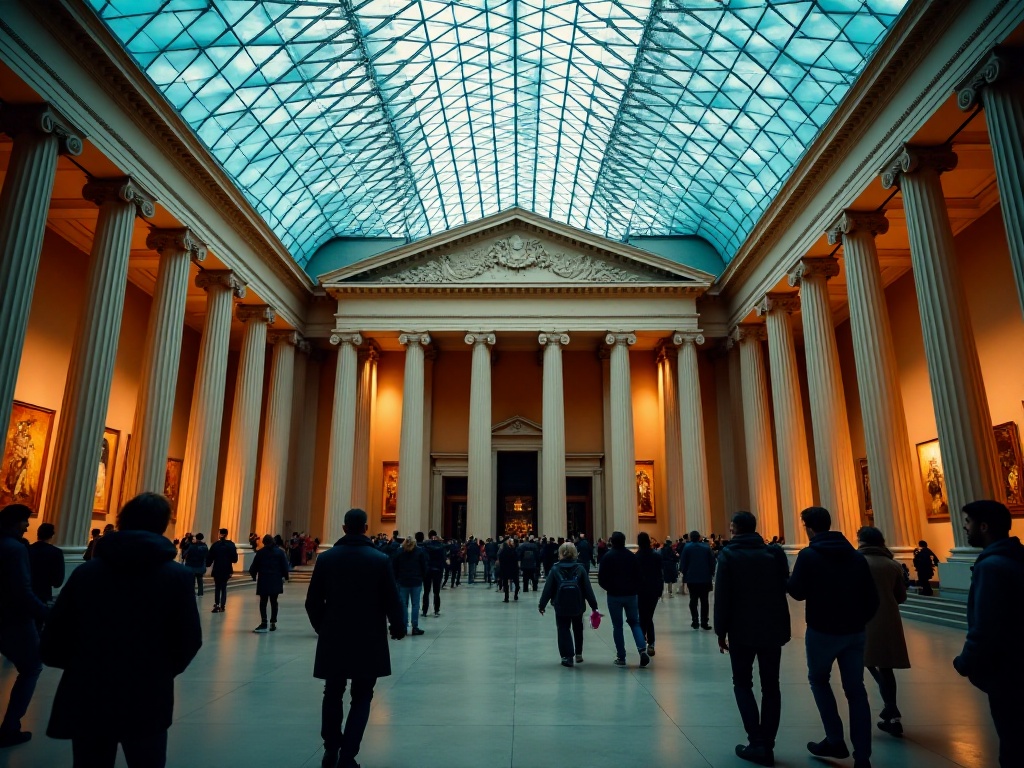
Digital Age
In this digital age, museums are actively embracing new technology. Shanghai Museum's digital services really opened my eyes. Through AR technology, you can observe artifacts in 360 degrees, as if bringing the entire museum home.
I particularly enjoy using the museum's AR application to view bronze vessels. Traditional display cases only let us see artifacts from one angle, but through AR technology, we can observe details from any angle. For instance, when looking at the Da Ke Ding, you can clearly see every pattern detail on the vessel's body and even the inscriptions inside.
The museum has also developed many online interactive projects. For example, the "Virtual Restoration" game lets visitors play the role of cultural relic restorers, experiencing the process of restoring pottery and bronze mirrors. This is not only fun but helps people understand the professionalism and importance of cultural relic protection.
Sometimes I wonder what ancient people would think if they knew their works could be appreciated by future generations in this way. Those craftsmen probably never imagined that their carefully made objects would not only be well preserved for thousands of years but could be appreciated by more people through technological power.
Digital technology hasn't just changed how we visit museums but also provides new possibilities for artifact research. For example, through 3D scanning technology, researchers can obtain detailed data without touching artifacts, greatly reducing the risk of damage during research.
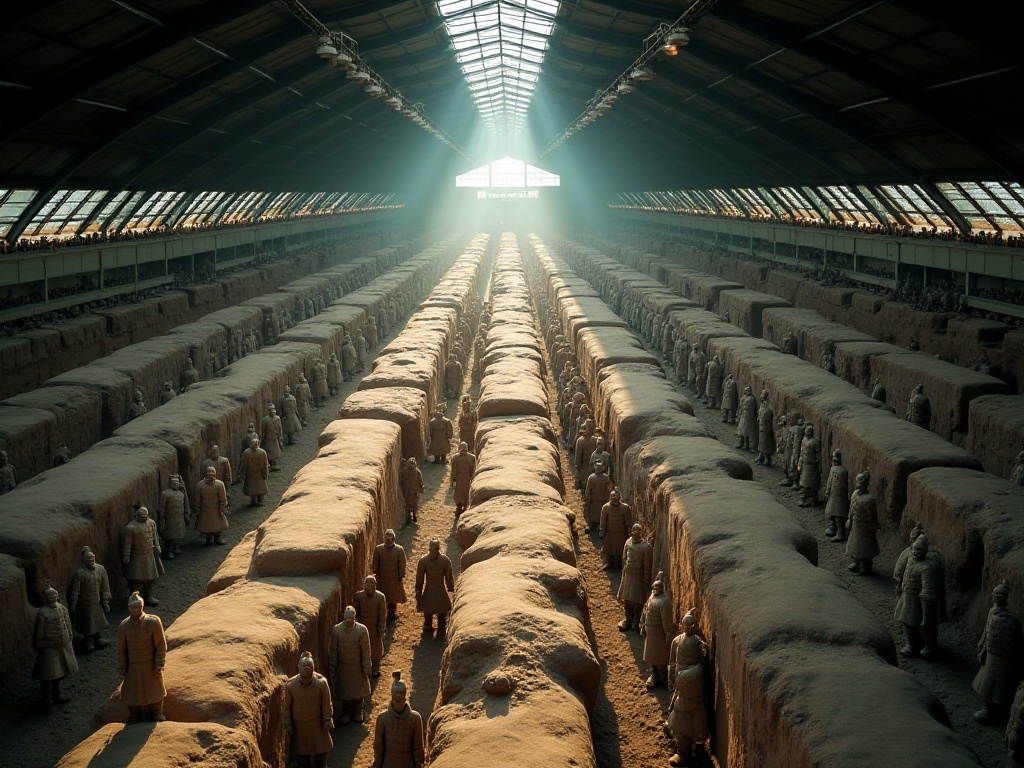
Historical Insights
From Alexandria's ancient museum to Renaissance noble collections to modern public museums, humanity's pursuit of knowledge and civilization has never stopped. This makes me think: in this age of information explosion, what is the significance of museums?
Actually, museums are no longer just showrooms for collections but bridges connecting past and future. Here, we can see the development trajectory of human civilization and understand the connections and differences between different cultures. For example, in the British Museum, we can see how ancient Egyptian civilization influenced ancient Greece, which then influenced Rome - these civilizations' interactions form the river of human civilization.
Museums are also mirrors for reflecting on the present. Looking at those ancient artifacts, we think: how did our ancestors solve problems? What insights do their wisdom offer today? For instance, ancient hydraulic engineering and architectural techniques still inspire us today.
When visiting Shanghai Museum, I particularly enjoy viewing ancient calligraphy and painting. The understanding of nature and contemplation of life expressed by those literati artists still strongly resonate today. This makes me understand that although times change, the core concerns of human nature are actually connected.
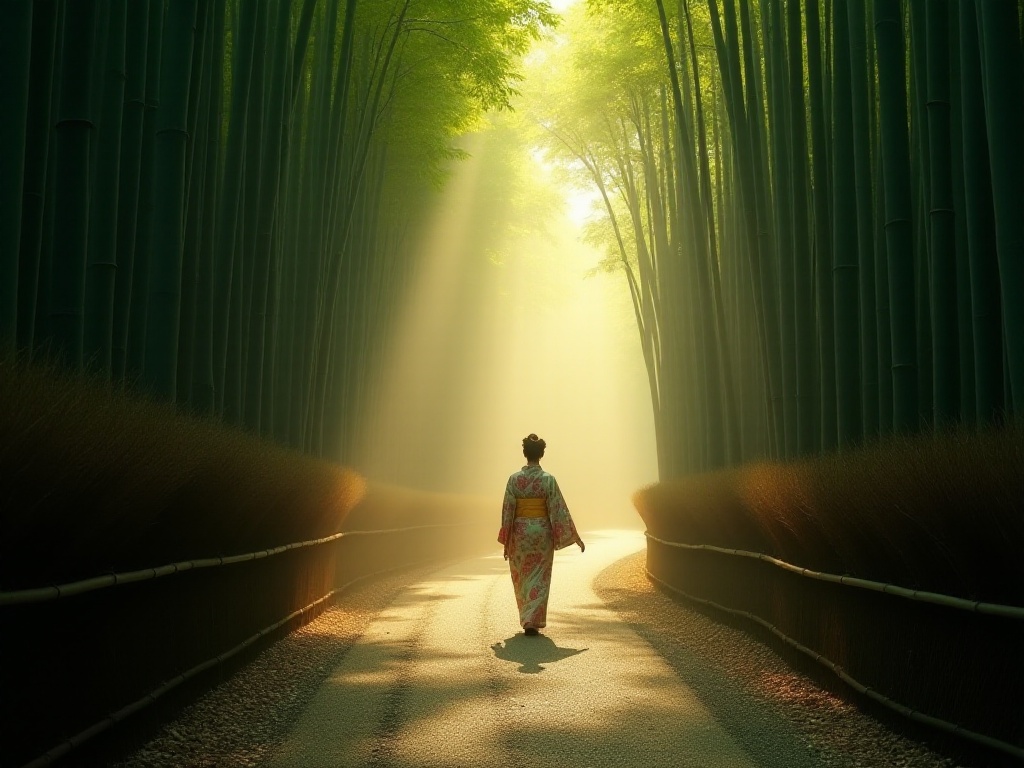
Reflections
Each time I enter a museum, I gain new insights. These frozen fragments of history are like mirrors reflecting the brilliance of human civilization. Sometimes standing before an artifact, I try to imagine its story: Who made it? How did people use it then? What journey did it take to reach us?
The most important lesson museums taught me is: slow down and feel with your heart. Modern life moves too fast; we often forget to stop and think. But in museums, facing artifacts that have endured thousands of years, we must slow down and savor the story behind each work.
These artifacts aren't just witnesses to the past but inspirations for the future. They tell us: civilization needs inheritance, and each generation has the responsibility to protect and spread cultural heritage. Just as we can appreciate the treasures left by our ancestors, we must also leave something for future generations.
A museum is like a book that can never be finished - each time you open it, you discover new content. Next time you visit a museum, try slowing down and spending more time with artifacts that truly move you. Let's together listen to the stories these artifacts tell and feel the charm of human civilization.
Which museum is your favorite? Welcome to share your museum stories in the comments.


